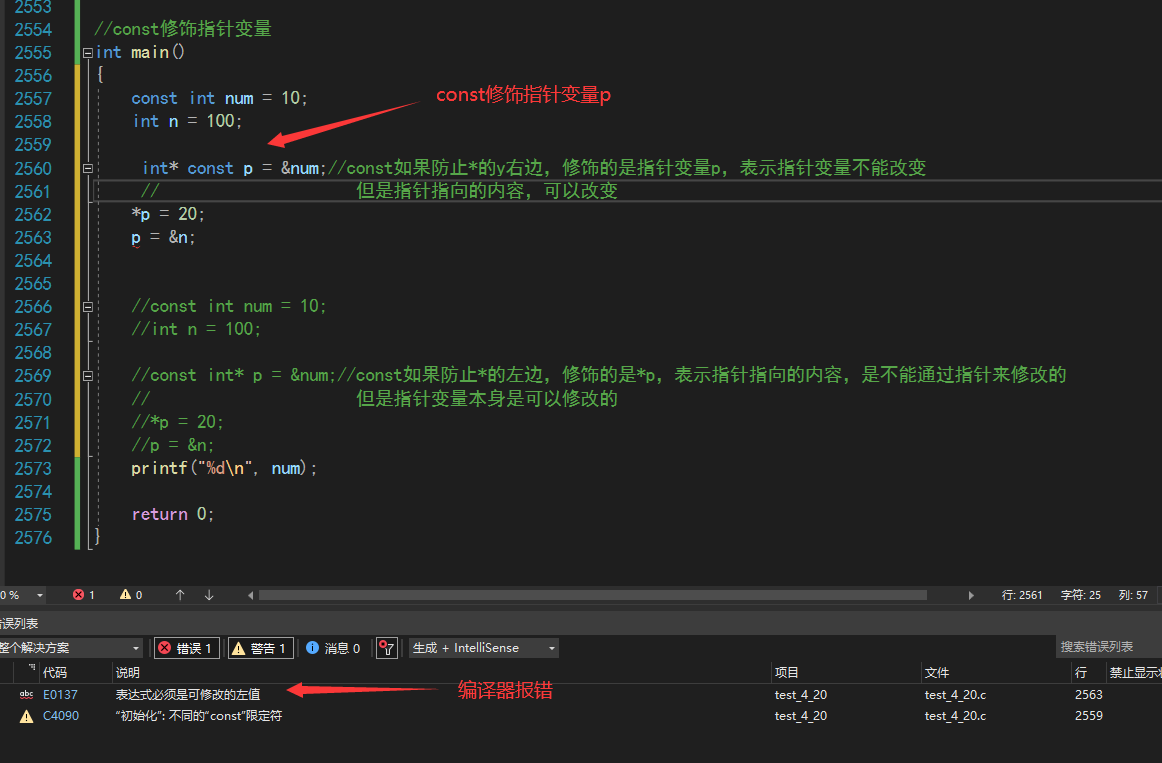文章目录
- Android系统架构
- Android四大组件
- Activity
- Service
- Broadcast Receiver
- Content Provider
- 两大视图
- 主要结构目录
Android系统架构
https://blog.csdn.net/xzzteach/article/details/140904613
Android四大组件
Activity
- 一个 Activity 包含了用户能够看到的界面,从而于用户进行交互。一个应用程序中可以有零个或者多个Activity。零个 Activity 就表示,这个应用程序不包含与用户交互的界面。
- Android应用中每一个Activity都必须要在AndroidManifest.xml配置文件中声明注册,否则系统将不识别也不执行该Activity。
<activityandroid:name=".MainActivity"android:exported="true"android:label="@string/app_name"><intent-filter><action android:name="android.intent.action.MAIN" /><category android:name="android.intent.category.LAUNCHER" /></intent-filter></activity>

- Activity的生命周期
Android 是使用任务(task)来管理Activity的,一个任务就是一组存放在栈里Activity的集合,这个栈也叫作返回栈。Activity的生命周期由以下几个部分组成:
| 函数 | 描述 |
|---|---|
| onCreat() | 一个Activity启动后第一个被调用的函数,常用来在此方法中进行Activity的一些初始化操作。例如创建View,绑定数据,注册监听,加载参数等。 |
| onStart() | 当Activity显示在屏幕上时,此方法被调用但此时还无法进行与用户的交互操作。 |
| onResume() | 英文词义简历、继续进行这个方法在onStart()之后调用,也就是在Activity准备好与用户进行交互的时候调用,此时的Activity一定位于Activity栈顶,处于运行状态。 |
| onPause() | 这个方法是在系统准备去启动或者恢复另外一个Activity的时候调用,通常在这个方法中执行一些释放资源的方法,以及保存一些关键数据。 |
| onStop() | 这个方法是在Activity完全不可见的时候调用的。 |
| onDestroy() | 这个方法在Activity销毁之前调用,之后Activity的状态为销毁状态。 |
| onRestart() | 当Activity从停止stop状态恢进入start状态时调用状态。 |

实际操作过程中,当打开启动Android应用时,MainActivity会经过onCreate-> onStart -> onResume三个阶段,此时若按home键或则back按键,MainActivity会经过onPause -> onStop这两个阶段,再进入此MainActivity时,会再调用onRestart -> onStart -> onResume三个阶段。
3、Activity 启动模式
启动模式一共有 4 中:standard、singleTop、singTask和 singleInstance,可以在 AndroidManifest.xml 中通过 标签指定 android:launchMode 属性来选择启动模式。
standard模式
standard 模式是 Activity 的默认启动模式,在不进行显示指定的情况下,所有 Activity 都会自动使用这种启动模式。对于使用 standard 模式启动的 Activity,系统不会在乎这个 Activity 是否已经存在在栈中了。每次启动的时候都会创建一个新的实例。一般用于打开邮件之类的。

- 下图为生成的默认Empty Activity

singleTop模式 (栈顶复用模式)
如果 Activity 指定为 singleTop,在启动 Activity 的时候发现返回栈的栈顶已经是该 Activity 了。则认为可以直接使用它,就不会再创建新的 Activity 实例了。因为不会创建新的 Activity 实例,所以 Activity 的生命周期就没有什么变化了。假设你在当前的Activity中又要启动同类型的Activity,此时建议将此类型Activity的启动模式指定为SingleTop,能够降低Activity的创建,节省内存!
一般用于登录页面,新闻详情页等。

singTask 模式(栈内单例模式)
singleTop 很好的解决了重复创建栈顶 Activity 的问题。如果 Activity 没有处于栈顶的位置,还是可能会创建多个 Activity 实例的。那就需要借助 singleTask 了。当 Activity 的启动模式为 singleTask 的时候,每次启动该 Activity 的时候系统会首先在返回栈中检查是否存在该 Activity 的实例,如果发现已经存在则直接使用该实例。并把这个 Activity 之上的所有 Activity 全部出栈,如果没有就会创建一个新的 Activity 实例。
一般主页面使用,购物页面,付款页面,浏览器主页等

- 下图为uniapp

singleInstance模式(堆内单例模式)
singleInstance 模式的 Activity 会启用一个新的返回栈来管理这个 Activity 。在这种模式下会有一个单独的返回栈来管理这个 Activity,不管是哪个应用程序来访问这个 Activity,都共用的同一个返回栈,也就解决了共享 Activity 实例的问题。

4、Activity 之间相互跳转及通信
Intent(意图)是应用程序种各个组件联系的桥梁,通信的载体,负责应用程序中数据的传递。
- 不带数据跳转
Intent intent = new Intent(this,MainActivity.class);
startActivity(intent);
此段代码实现从当前Activity,跳转到MainActivity,不带任何参数。
- 带数据或多个数据跳转
//带数据跳转
String data = "是我主活动调用了你";
Intent intent = new Intent(this, SecondActivity.class);
intent.putExtra("ext", data);
startActivity(intent);
- 带数据跳转,带数据返回
Intent intent = new Intent(LoginActivity.this,RegisterActivity.class);
Bundle bundle = new Bundle() ;
bundle.putString("register","请开始注册!");
intent.putExtras(bundle) ;
startActivityForResult(intent,1);
在跳转时使用startActivityForResult方法,此方法传入两个参数一个是Intent ,另外一个是给当前请求设置的一个请求ID,此ID在结束数据时辨识是否使当前请求的返回结果。
同时要在跳转源Activity中实现 onActivityResult 方法来接收处理目的Activity返回的数据。
@Override
protected void onActivityResult(int requestCode, int resultCode, @Nullable Intent data) {super.onActivityResult(requestCode, resultCode, data);switch (requestCode) {case 1:if (resultCode == RESULT_OK) {final EditText loginUsername = findViewById(R.id.username);String returnUsername = data.getStringExtra("userName");//序列化方式取出实体User user = (User)data.getSerializableExtra("user");loginUsername.setText(returnUsername);loginUsername.setSelection(returnUsername.length());}break;default:}
}
- Intent隐式实现启动其他程序Activity
在当前Activity中调用百度请求界面。
Uri uri = Uri.parse("https://www.baidu.com");
Intent it = new Intent(Intent.ACTION_VIEW, uri);
startActivity(it);
直接调用打电话功能
Intent i = new Intent(Intent.ACTION_VIEW, Uri.parse("tel:13207690000"));
startActivity(i);
在使用系统电话功能时需要给当前应用程序授权,在AndroidManifest.xml文件中增加
<uses-permission android:name="android.permission.CALL_PHONE" />
打开地图界面
Uri uri = Uri.parse("geo:38.899533,-77.036476");
Intent it = new Intent(Intent.ACTION_VIEW, uri);
startActivity(it);
Service
- Service简单介绍
- Service它可以在后台执行长时间运行操作而没有用户界面的应用组件,不依赖任何用户界面,例如后台播放音乐,后台下载文件等。
- 虽然服务是在后台运行的,但是Service和Activity都是运行在当前APP所在的main thread(UI主线程)中的,而耗时操作(如网络请求、拷贝数据、大文件)会阻塞主线程,给用户带来不好的体验。如果需要在服务中进行耗时操作,可以选择 IntentService,IntentService是Service的子类,用来处理异步请求。
- Service启动的两种方式
startService()
在Acitivity界面通过显式意图(或隐式意图)的方式来启动服务和关闭服务。
Intent intentService = new Intent(MainActivity.this, AudioServiceOnBind.class);
startService(intentService);
生命周期顺序:onCreate->onStartCommand->onDestroy
onCreate() 当Service第一次被创建时调用。
onStartCommand() 当startService方法启动Service时,该方法被调用。
onDestroy() 当Service不再使用时调用。
bindService()绑定服务
当应用组件通过调用 bindService() 绑定到服务时,服务即处于“绑定”状态。绑定服务提供了一个客户端-服务器接口,允许组件与服务进行交互、发送请求、获取结果。 仅当与另一个应用组件绑定时,绑定服务才会运行。 多个组件可以同时绑定到该服务,但全部取消绑定后,该服务即会被销毁。
首先在我们的服务中创建一个内部类AudioBinder继承Binder来获取当服务实例,然后在onBind方法中返回当前服务的实例。
public class AudioServiceOnBind extends Service implements MediaPlayer.OnCompletionListener{private final IBinder binder = new AudioBinder();//用于播放音乐等媒体资源private MediaPlayer mediaPlayer;public AudioServiceOnBind() {super();}@Overridepublic int onStartCommand(Intent intent, int flags, int startId) {Log.d(AudioServiceOnBind.this.getClass().getName(),"执行onStartCommand()");return 0;}@Overridepublic IBinder onBind(Intent intent) {return binder;}@Overridepublic void onCreate(){super.onCreate();Log.d(AudioServiceOnBind.this.getClass().getName(),"执行onCreate()");if (mediaPlayer==null){mediaPlayer=MediaPlayer.create(this,R.raw.gumeng);mediaPlayer.setOnCompletionListener(this);}mediaPlayer.start();}@Overridepublic void onCompletion(MediaPlayer mp) {stopSelf();}@Overridepublic void onDestroy(){if(mediaPlayer.isPlaying()){mediaPlayer.stop();}mediaPlayer.release();stopForeground(true);Log.d(AudioServiceOnBind.this.getClass().getName(),"执行onDestroy()");}//为了和Activity交互,我们需要定义一个Binder对象class AudioBinder extends Binder {//返回Service对象AudioServiceOnBind getService(){return AudioServiceOnBind.this;}}}
然后在调用的Activity中创建一个ServiceConnection对象重写其中的onServiceConnected方法获取所要绑定的服务。在触发事件的方法中调用bindService实现服务的最终绑定。
public class MainActivity extends AppCompatActivity {private AudioServiceOnBind audioServiceOnBind;//使用ServiceConnection来监听Service状态的变化private ServiceConnection conn = new ServiceConnection() {@Overridepublic void onServiceDisconnected(ComponentName name) {audioServiceOnBind = null;}@Overridepublic void onServiceConnected(ComponentName name, IBinder binder) {//这里我们实例化audioService,通过binder来实现audioServiceOnBind = ((AudioServiceOnBind.AudioBinder) binder).getService();}};public void click_music_open(View view) {Intent intentService = new Intent(MainActivity.this, AudioServiceOnBind.class);bindService(intentService, conn, Context.BIND_AUTO_CREATE);}
}
生命周期:onCreate->onBind->onUnBind->onDestroy
-
onCreate() 当Service被创建时,由系统调用。
-
onBind() 当bindService方法启动Service时,该方法被调用。
-
onUnbind() 当unbindService方法解除绑定时,该方法被调用。
-
onDestroy() 当Service不再使用时,由系统调用。
- 实现前台Service
Android 8.0 后系统不允许后台应用创建后台服务。 因此,Android 8.0 引入了一种全新的方法,即 Context.startForegroundService(),以在前台启动新服务。
在service onStartCommand方法中增加以下代码
@Overridepublic int onStartCommand(Intent intent, int flags, int startId) {Log.d(AudioServiceOnBind.this.getClass().getName(),"执行onStartCommand()");Intent nfIntent = new Intent(this, MainActivity.class);Notification.Builder builder = new Notification.Builder(this.getApplicationContext()).setContentIntent(PendingIntent.getActivity(this, 0, nfIntent, 0)).setSmallIcon(R.mipmap.touxiang).setContentTitle("wu").setContentText("Android测试").setWhen(System.currentTimeMillis());String CHANNEL_ONE_ID = "com.wu";String CHANNEL_ONE_NAME = "Channel One";//安卓8.1以上系统NotificationChannel notificationChannel = new NotificationChannel(CHANNEL_ONE_ID, CHANNEL_ONE_NAME, NotificationManager.IMPORTANCE_MIN);notificationChannel.enableLights(false);notificationChannel.setShowBadge(true);notificationChannel.setLockscreenVisibility(Notification.VISIBILITY_SECRET);NotificationManager manager = (NotificationManager) getSystemService(NOTIFICATION_SERVICE);manager.createNotificationChannel(notificationChannel);builder.setChannelId(CHANNEL_ONE_ID);Notification notification = builder.build();startForeground(1, notification);return super.onStartCommand(intent,flags,startId);}在调用Activity中调用startForegroundService方法。public void click_music_open(View view) {Intent intentService = new Intent(MainActivity.this, AudioServiceOnBind.class);if (Build.VERSION.SDK_INT >= Build.VERSION_CODES.O) {startForegroundService(intentService);} else {startService(intentService);}}
- 使用IntentService
由于Service中的逻辑都是执行在主线程中的,此时如果在Service中处理一下耗时操作可能就会给用户带来不好的体验。所以此时就可以使用Android多线程Service.
本质上IntentService是在Service里开启线程去做任务处理。IntentService会在任务执行完成后自行结束自己,而不需要外部去调用stopService了。
使用IntentService定义的服务,要开启线程,只要重写一个onHandleIntent()方法就可以了,而且在运行完之后会自动停止。
例如数据下载 数据上传等。
public class MyIntentService extends IntentService {private static final String TAG = "MyIntentService";public MyIntentService() {super("MyIntentService");}@Overrideprotected void onHandleIntent(Intent intent) {Log.d(TAG, "当前是子线程: " + Thread.currentThread().getId());//在这里实现异步多线程处理逻辑//例如数据下载 数据上传等。Log.d(TAG, "我在后台默默下载数据中。。。。");}@Overridepublic void onCreate() {Log.d(TAG, "onCreate: ");super.onCreate();}@Overridepublic int onStartCommand(Intent intent, int flags, int startId) {Log.d(TAG, "onStartCommand: ");return super.onStartCommand(intent, flags, startId);}@Overridepublic void onDestroy() {Log.d(TAG, "onDestroy: ");super.onDestroy();}
}
Broadcast Receiver
Content Provider
两大视图
- project
- android

主要结构目录
-
bulid
编译时自生成文件

-
libs
第三方jar包,会被自动添加到构建路径中去

-
java
java代码

-
res
项目中使用的所有资源,drawable存放图片,layout存放布局,values存放字符,mipmap存放图标

-
Manifest
AndroidManifest.xml配置文件,程序中定义的四大组件都需要在这个文件里注册,另外这个文件中还可以给应用程序添加权限声明

-
bulid.gradle
项目构建工具,通常有两个bulid.gradle,一个是项目级一个是app级

-
com.android.application
应用程序模块 -
com.android.library
库程序模块
区别:一个是可以直接运行的,一个只能作为代码库依附于别的应用程序模块来运行








![[Unity实战]Mirror网络与Addressable场景管理](https://i-blog.csdnimg.cn/direct/471b820c6e0648389ecaeea48e4f55f4.gif)










